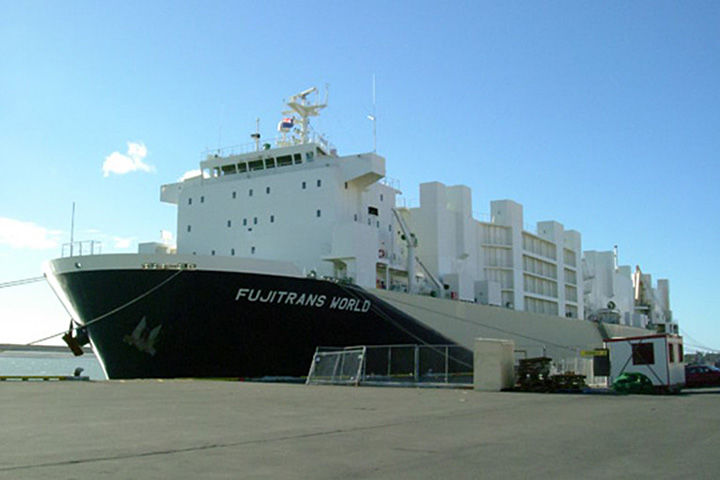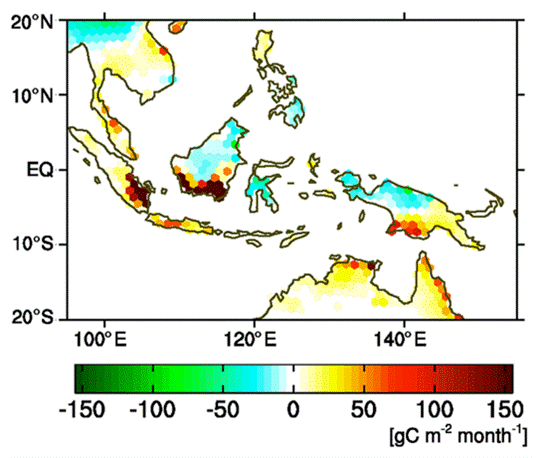Japan-Southeast Asia Route
Outline and Results
Since 2007, in the Japan-Southeast Asia route, we have been monitoring GHGs in the atmosphere to capture GHG and SLCF (short-lived climate forcer) emissions in the Southeast Asia region, an area of remarkable economic development.
The car carrier "FUJITRANS WORLD" belonging to FUJITRANS Corporation, which was in charge of the Japan-Oceania route until 2005, is conducting observations. Furthermore, from 2010 to 2014, we conducted observations using two vessels, with the car carrier "TRANS FUTURE 1" belonging to TOYOFUJI SHIPPING CO., LTD.
In 2018-2019, the car carrier "TRANS HARMONY 1" belonging to TOYOFUJI SHIPPING CO., LTD. carried out the observations on behalf of "FUJITRANS WORLD" (FUJITRANS WORLD has now returned to observations).

Based on historical observation datasets, we estimated the amount of methane leakage from offshore oil and gas wells scattered along the route, and we precisely evaluated the amount of CO2 emissions due to large-scale peat fires by analysis in combination with aircraft observations (Nara et al., 2014; Niwa et al., 2021). Since these emissions can be controlled by anthropogenic measures, monitoring activities that take advantage of the "moving observation site" are expected to continue in the future.

The color bar represents the uptake area from light blue to green and emission area from yellow to red. (Excerpted from Niwa et al. 2021)

